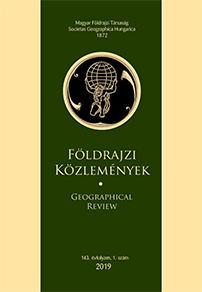The Connection Between Geographical and Cultural Distances: How Far Is The Esterházy Palace of Fertőd in Reality
Abstract
This study examines the rarely researched relationship between geographical distance (on-road time in minutes) and cultural distance (the cultural motivation measured by the ratio of graduates) in the case of visiting an attraction of heritage tourism. The tourist destination in question is the Esterházy Palace in Fertőd. The database is based upon the Hungarian tourists who visited the castle in 2016. Geographic accessibility was calculated on the postal zip code, and the cultural distance was estimated on the basis of the degree-owner (graduate) population of the examined districts. Based on our results, we determined, on the one hand, the types of the Castle visitors’ starting geographic location and the social profile of different regions. On the other hand, we determined the role of cultural distance in the “crossing” of the geographical distance. Our results show that greater geographical distance is also associated with an increase in the significance of cultural distance in order to reach a heritage tourism target. Thus, the joint examination of geographic and social distance is of increased importance in the field of tourism research.
Copyright (c) 2019 István Vizi

This work is licensed under a Creative Commons Attribution-NonCommercial-NoDerivatives 4.0 International License.



